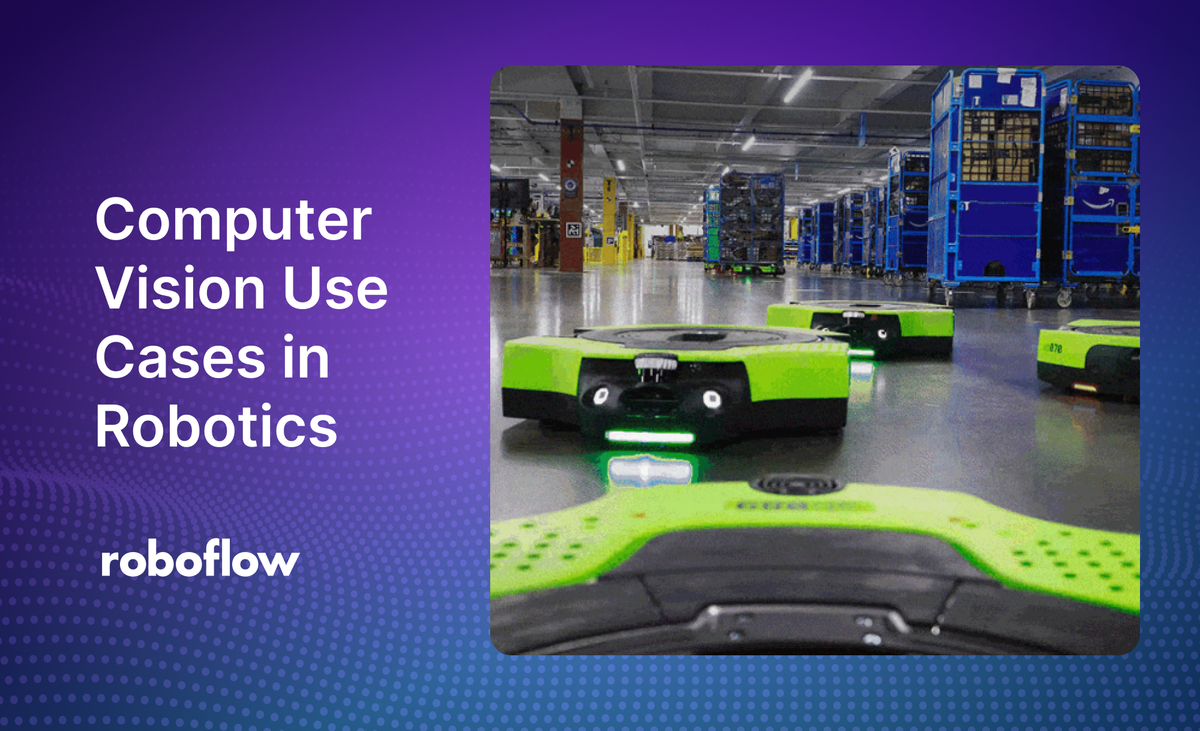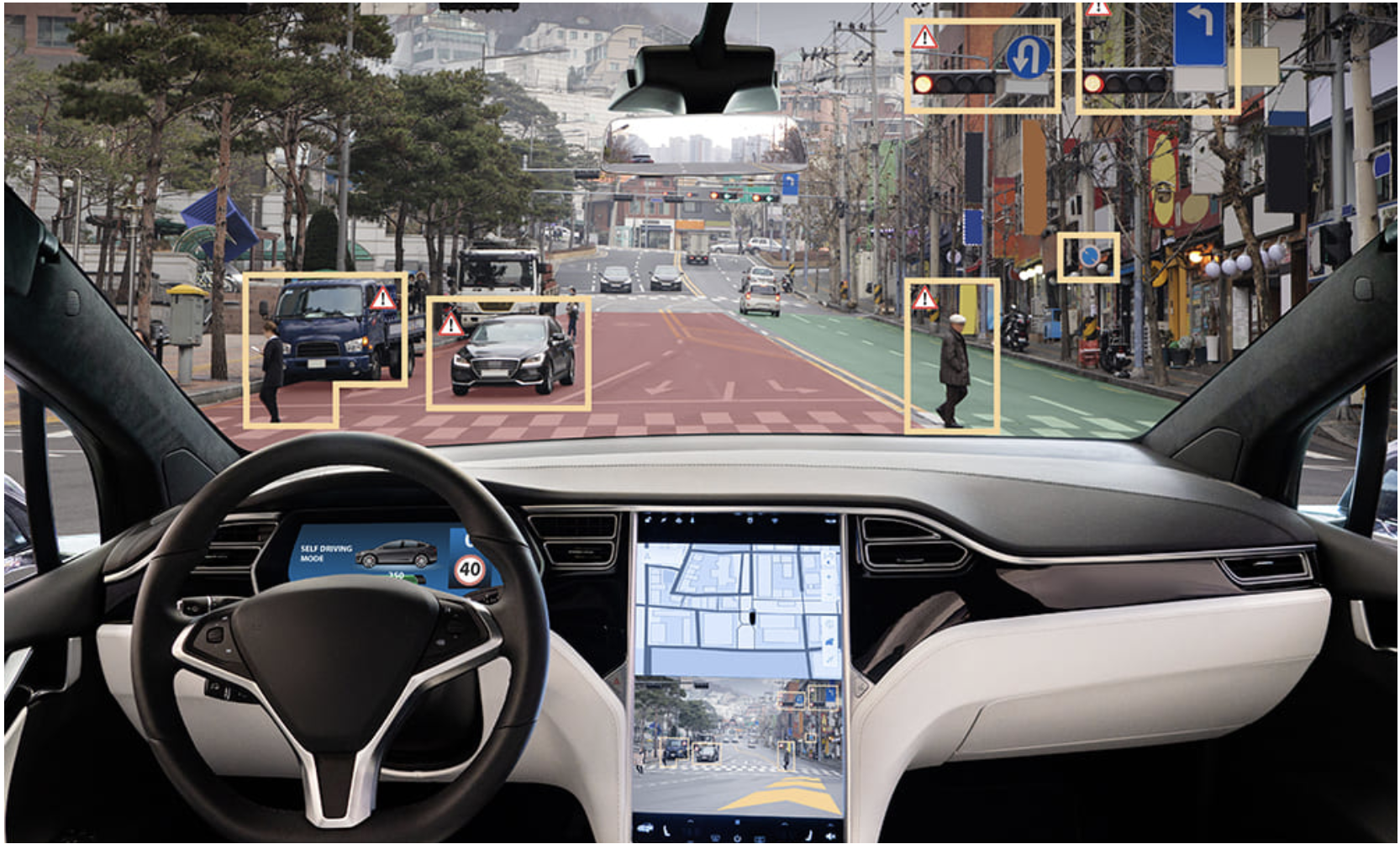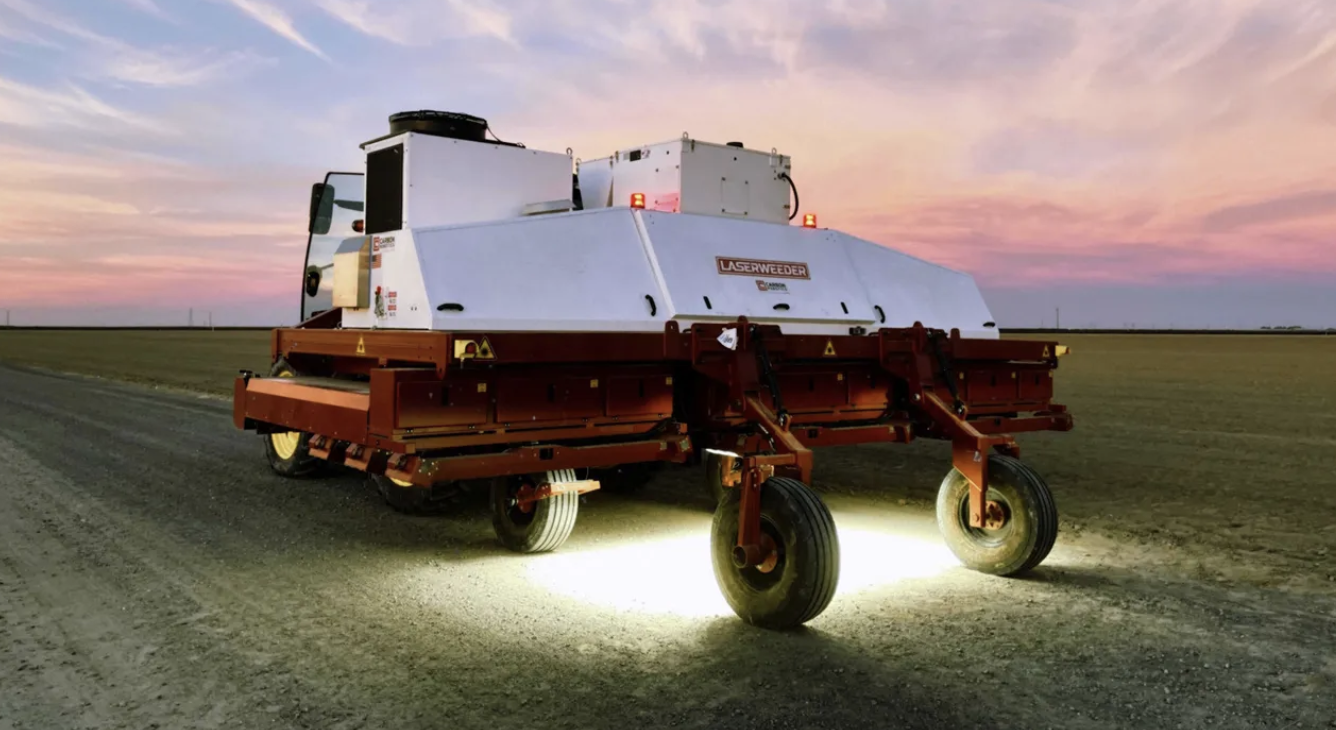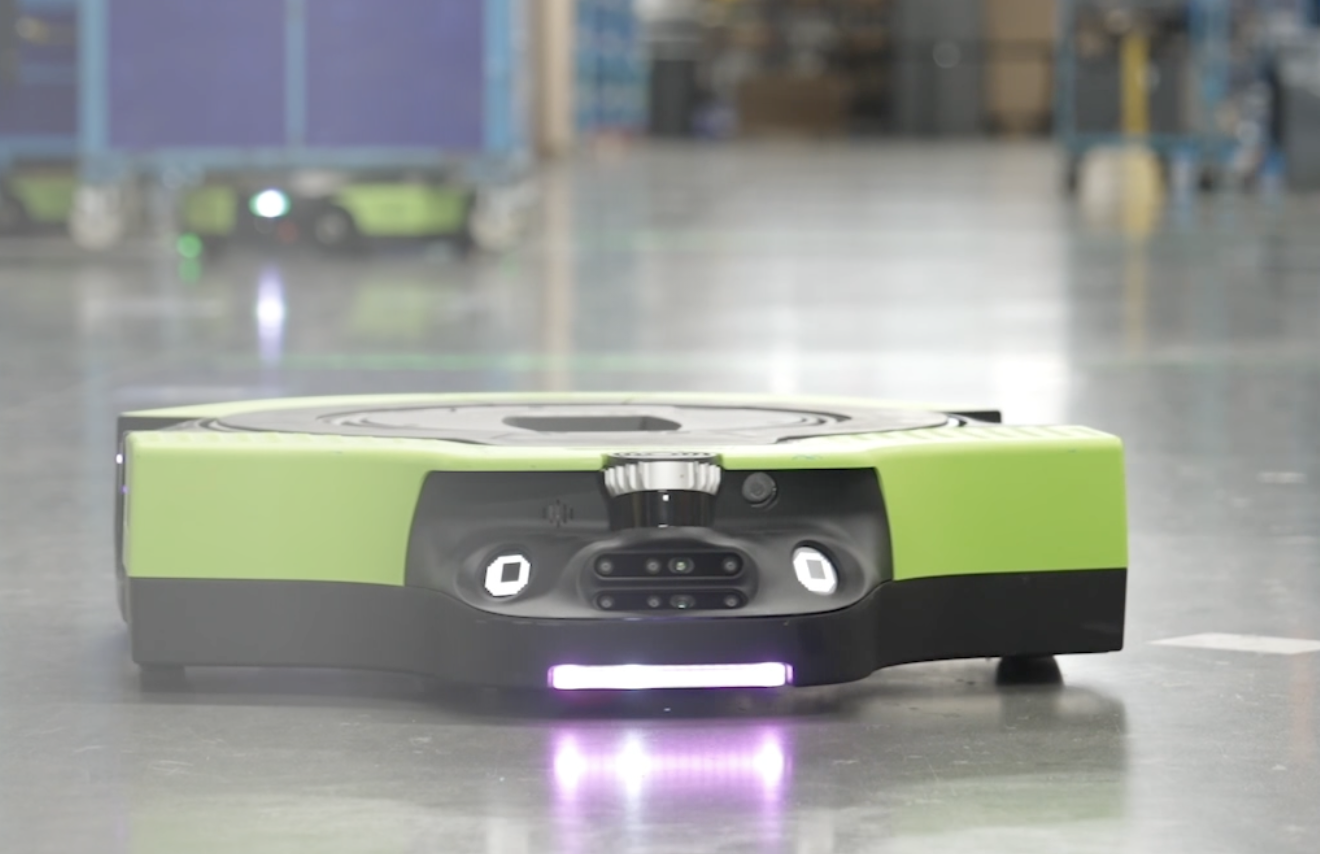
Computer vision makes it possible for robots and machines to see, read, and understand the real-world environment. Computer vision in robotics, often termed machine vision, is used in many automation tasks like navigation, object recognition, quality control, and so on. Robotic arms, integrated with computer vision, are commonly used in assembly line operations to enhance efficiency.
Vision AI-enabled robots can perform tasks with better accuracy than humans. In fact, robots can be used in challenging environments where it’s hard or even impossible for people to be. For instance, NASA used computer vision systems in the Perseverance Mars Rover to navigate rough terrain. In this article, we’ll explore how computer vision is used in robotics.
What is Computer Vision in Robotics?
Computer vision is a branch of AI that enables computers and machines to understand the real world from visual information. Visual data, such as images and videos, is captured continuously by high-quality cameras and sensors. Then, the captured data is processed and analyzed using machine learning algorithms. Based on the results generated by the machine learning algorithms, robots can make informed decisions automatically.
Using computer vision, robots, and machines can gather visual data and make automated decisions. It starts with data collection, where cameras and sensors on the robot capture visual data such as color, texture, depth information, and so on. The placement of these cameras and sensors need to be well-positioned so that they can capture visual data without any obstructions. Then, the collected data is processed to extract relevant information like objects, edges, and more. The extracted information is then analyzed using different computer vision techniques like object detection, instance segmentation, and image classification. Based on these insights, robots can make automated decisions related to quality control, navigation, and grasping objects.
Key Applications of Computer Vision in Robotics
Object Detection and Recognition
Robots equipped with computer vision techniques, such as object detection, are used in tasks such as inventory management, navigation, assembly line handling, and sorting operations. The cameras placed in the robots capture 2D and 3D data from the real world.
Then, the captured images are processed with machine and deep-learning algorithms to detect the objects. In some cases, the captured images may be preprocessed for noise reduction and feature extraction. Vision systems can also detect an object using depth-sensing cameras and calculate its distance from it. With this information, robots can create a map with minimal or no obstructions.
Autonomous Navigation
Almost all self-driving vehicles use LiDAR (Light Detection and Ranging) for navigation purposes. Robotic devices like bots and drones can gather data from the environment using LiDAR sensors and cameras. Then, computer vision algorithms process the data to create a digitized 3D map of buildings, roads, pedestrians, road signals, and other objects. In most cases, the 3D map is updated continuously for every movement of the robot. By detecting the objects on the map, the system maps an efficient and safest route. As the map is updating continuously, self-navigating robots and drones can avoid obstacles or any sudden pedestrian movements.

Quality Control in Manufacturing
In manufacturing, computer vision can be used for tasks like quality control and assembly line operations. Industrial robots use computer vision to scan the products in the assembly line for defects such as cracks, deformations, or dissimilarities. These robots can scan the products.
Certain advanced robots even use laser scanners to scan the interiors of the products. Then, these scanned products can be analyzed to look for any defects. If any, the system will notify the workers with an alarm or any predefined measures. Interestingly, robotic systems with laser scanning sensors can detect defects as small as one-thousandth of a millimeter, making it impossible to miss any defects.
Technologies Used with Computer Vision in Robotics
Computer vision in robotics is a combination of advanced hardware and powerful software technologies. Let’s understand a few of the key vision technologies used in robotics.
Cameras and Sensors
A popular saying in computer science goes, “Garbage in, garbage out,” which also applies to computer vision models: the quality of input determines the quality of output. For these models, cameras and sensors serve as the primary input sources.
Different types of cameras and sensors are used to get the necessary inputs. In general, high-quality cameras are the best cameras for computer vision. The cameras and sensors to be used are decided based on industry requirements and robotic limitations. Cameras like 2D, 3D, and depth cameras are widely used in computer vision applications.
2D cameras capture two-dimensional images of the real world, providing information about color and intensity. A 3D camera, on the other hand, captures depth information, creating a three-dimensional representation. Depth cameras capture the depth information and calculate the distance from the source to the object.
Combining these options, LiDAR (Light Detection and Ranging) captures both 2D and 3D data from the real world and also calculates depth information. Specifications like resolution, frame rate, sensor size, lens compatibility, and shutter type are also considered when choosing a camera for an application.
Machine Learning and Deep Learning Models
Once the inputs are gathered from the cameras and sensors, they are processed using neural networks and machine and deep learning models.
Convolutional Neural Networks (CNNs) and other deep learning techniques like Self-Organizing Maps (SOMs) and Deep Reinforcement Learning (DRL) are used to learn and extract information from the images and videos. These neural networks and learning models process the inputs for different operations, such as object detection, image recognition, and navigation.
For instance, CNNs are great at identifying and classifying objects in images, which is useful for quality control in manufacturing, while GANs can create realistic image variations to improve model training.
SLAM
SLAM (Simultaneous Localization and Mapping) algorithms are essential in robotics for creating virtual maps of real-world environments and determining the robot’s position within these maps. In computer vision, SLAM algorithms are used to generate new virtual maps, building on previously stored ones. SLAM sensors gather real-time data about the environment and the robot’s location to create virtual maps. The computer vision system then compares these new maps and locations with stored versions. If it detects a new map or location, it updates the stored data accordingly. SLAM sensors are crucial for enabling robots to navigate complex environments with greater autonomy.
Benefits of Computer Vision in Robotics
Computer vision in robotics is unlocking new possibilities and offering numerous benefits. Here are some of the key advantages:
- Improved Efficiency and Accuracy: Automated machine vision systems can perform repetitive tasks like product quality with improved accuracy and without errors.
- Enhanced Safety: By using automated robots in hazardous workplace environments such as mining and power plant industries, human accidents can be avoided.
- Cost Savings: Machine vision robots can operate with high accuracy consistently, ultimately reducing costs and the manpower needed for repetitive tasks.
Case Studies and Real-World Applications
Vision AI robots are making a big impact across many industries. With computer vision, they’re now essential in areas like automotive, healthcare, agriculture, warehouse management, inventory, and more. In the following case studies, we’ll look at how these applications are changing the way each industry operates.
Autonomous Vehicles
Autonomous cars come equipped with advanced driver assistance systems designed to improve the driving experience. These systems use computer vision to collect real-world data and make critical decisions on the road. A good real-time example is Tesla's fully self-driving cars.
Tesla’s autopilot system consists of eight vision cameras that process 360-degree vision for up to 250 meters. Based on the data gathered from these eight cameras, the hardware can analyze real-world information and detect pedestrians, lanes, and road signs. If the camera detects a stop sign or a stop signal, the computer vision system can alert the engine unit to stop the car and not violate the stop signal.
Agricultural Robots
Vision-enabled robots are used in agricultural applications for monitoring plant growth, harvesting tasks, and more. Machines like LaserWeeder are widely used in countries like North America, Europe, and Australia. The tech behind LaserWeeder involves computer vision and deep learning to identify and eliminate weeds from croplands. The usage of advanced machines like LaserWeeder eliminates the need for chemicals to kill the weeds, which leads to healthier crops and more profitable harvesting.

Warehouse Robotics
Robots that use computer vision can be useful in inventory management, warehouse navigation, and package sorting applications. For example, Amazon uses autonomous robots, like Proteus, in its warehouses to manage large packages weighing up to 800 pounds, moving them from inventory to shipping areas.
The entire process is automated, from receiving task instructions and locating the correct cart to navigating an obstacle-free path and autonomously recharging when needed, all powered by advanced sensors and computer vision. Now, Amazon has more than 750,000 AI-powered robots in its fleet.

Conclusion
Computer vision is changing the world of robotics, helping improve sectors like healthcare, manufacturing, farming, etc. Vision AI helps robots see and understand what they are looking at, making it easier for them to do hard tasks, work safely, and be more productive.
As AI and computer vision get better, robots will work even more closely with people, making jobs faster and easier in ways we couldn’t have imagined before. With edge computing and faster communication like 5G, these robots will be able to process information quickly and make better decisions in real-time. Computer vision is helping create a future where robots can be important partners in both industrial applications and everyday life.
Keep Reading
- Read more on what is object tracking in computer vision.
- A blog on how to train robots to identify other robots.
- A tutorial on how to use instance segmentation in robotics.
Cite this Post
Use the following entry to cite this post in your research:
Contributing Writer. (Oct 31, 2024). Computer Vision Use Cases in Robotics. Roboflow Blog: https://blog.roboflow.com/computer-vision-robotics/
